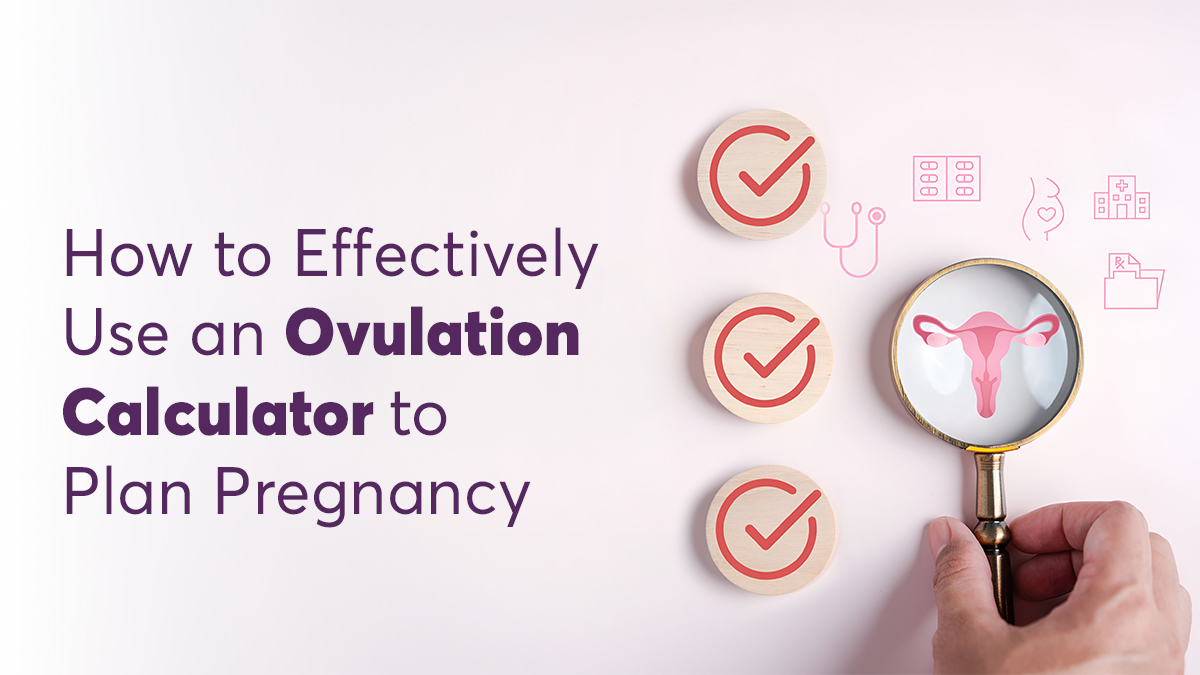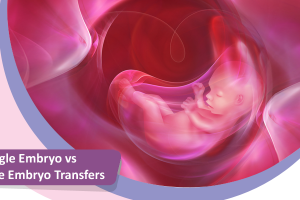How to Effectively Use an Ovulation Calculator to Plan Pregnancy

Did you know that tracking your menstrual cycle is an effective way to plan a pregnancy? But you don’t need to do all the hard work of keeping track of dates yourself. An ovulation calculator can be of great help in identifying the best days of your cycle to have intercourse to get pregnant. Here’s what you need to know to use one effectively.
Get to Know Your Menstrual Cycle
The menstrual phase is when blood from the uterus starts to flow out through the vagina. It may last between 3 to 7 days. Next is the follicular phase, which is also the longest (14-21 days) and begins after you stop menstruating. This is the time when an egg matures for fertility. Ovulation is the shortest phase, lasting up to 24 hours when a mature egg is released from the ovaries. It leads you into the luteal phase. You may have intercourse to get pregnant throughout the luteal phase.
Your menstrual cycle has 4 major phases – menstrual, follicular, ovulation, and luteal. Knowing your menstrual cycle can help you plan pregnancy, adventures, and rest phases through the cycle. This is because your body goes through various hormonal changes throughout the month. For instance, a few days before your period begins (Luteal phase), you probably feel low on energy and irritable.
When to Have Intercourse to Get Pregnant?
If you are planning to conceive, knowing your fertility window helps you identify when to have intercourse to get pregnant. Although ovulation lasts a short duration, your fertility window lasts 3 to 5 days before and after ovulation.
Physical Signs of Ovulation
- Light spotting or vaginal discharge
- Breast soreness/tenderness
- Mild abdominal or lower back pain
- High libido
- Beginning of bloating
- Hot flashes
These physical signs of ovulation might not always be very apparent. Using an ovulation calculator can make it easier to identify the fertility window.
What is an Ovulation Calculator?
This is your assistant to calculate your ovulation date, and it is simple to use. You can choose from a web or mobile app, or a physical calendar if you want to do it manually.
How to Use an Ovulation Calculator
- Visit our website to view the free ovulation calculator.
- Select the first day of your last period and your average cycle length
- Enter the length of your menstrual cycle.
Calculate Ovulation Date
Usually, ovulation occurs mid-cycle. An ovulation calculator uses your data to calculate your fertility window and the expected date of your next period. Powered by advanced technology, these tools are sophisticated enough to learn from your data and improve their accuracy. But remember to use the calculator consistently and enter the correct information.
Tips For Entering Information in the Ovulation Calculator
Enter the exact start and end date of menstruation.
Enter your menstrual cycle as the number of days between the start of two periods.
Map your menstrual cycle phases and symptoms through a physical calendar to gain confidence in the tool.
Are Free Ovulation Calculators Accurate?
Yes. They are mostly accurate in identifying your most fertile days to plan for pregnancy. However, if you have irregular cycles, it can affect their accuracy.
How to Track Your Ovulation with Irregular Periods?
Consult a gynaecologist to help you assess your ovulation and fertility window if you have irregular periods. They can guide you on lifestyle changes or hormonal therapy, if needed, to regularise the cycle. Try these suggestions and continue to use an ovulation calculator to accurately find your ovulation date.
LH Levels:
Use an at-home ovulation kit to check your luteinising hormone (LH) levels. Your LH elevates during ovulation.
Body Temperature:
Monitor your body temperature daily to know when you have ovulated. Your body temperature rises by 0.5°F after ovulation.
Tips to Use Ovulation Calculators for Getting Pregnant
- Understand your menstrual cycle and consistently track your symptoms.
- Stay sexually active during the fertility window. As a rule, do not let two consecutive days of the window pass without intercourse.
- Stop using contraception once you are ready to get pregnant.
- Manage stress by taking time out every day for activities that relax you.
- Maintain a healthy lifestyle with exercise and a balanced diet for sound reproductive health.
- His health and stress levels also matter.
- To better understand your menstrual cycle and fertility window, consider getting preconception counselling from a healthcare services provider.
- Track your body temperature daily to identify when you ovulate.
Planning Your Family with an Ovulation Calculator
An ovulation calculator can be an invaluable tool for women wanting to conceive. Even if you are not planning to conceive, it can give insights into your reproductive health. But this tool may take about 6 months to tune into your cycle. So, start using one as soon as possible, even if you have no plans to get pregnant yet. It is best to monitor the physical symptoms and get guidance from a healthcare professional, in addition to using the calculator for best results.
FAQs on Ovulation Calculators
Q: What is the best way to track ovulation to get pregnant?
A: The best way to track ovulation to get pregnant is by using an ovulation calculator. This tool helps identify your fertility window by calculating your ovulation date based on the first day of your last period and the length of your menstrual cycle. Additionally, monitoring physical signs of ovulation such as changes in cervical mucus, breast tenderness, and a slight rise in body temperature can be helpful. Consistently tracking these signs alongside using an ovulation calculator will improve accuracy.
Q: How many days from ovulation does it take to get pregnant?
A: Pregnancy can occur when intercourse happens within the fertility window, which lasts from about 3 to 5 days before ovulation to 1 day after ovulation. The egg is viable for about 24 hours after ovulation, but sperm can live in the female reproductive tract for up to 5 days, making this window the optimal time for conception.
Q: Can I get pregnant during ovulation?
A: Yes, you can get pregnant during ovulation. Ovulation is the phase in your menstrual cycle when a mature egg is released from the ovaries, making it the most fertile period. Having intercourse during this time increases the chances of the sperm meeting the egg, thus increasing the likelihood of conception.
Q: How do I know if I already ovulated?
A: To know if you have already ovulated, look for signs such as a slight rise in basal body temperature, which increases by about 0.5°F after ovulation. Other signs include changes in cervical mucus, which becomes clearer and stretchier, and mild abdominal pain or discomfort known as mittelschmerz. Using an ovulation calculator regularly and tracking these physical symptoms can help you identify whether you have ovulated.










